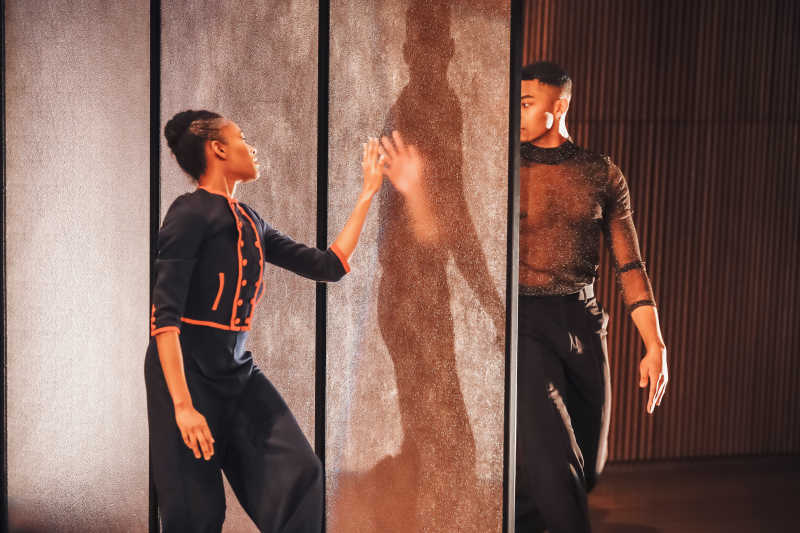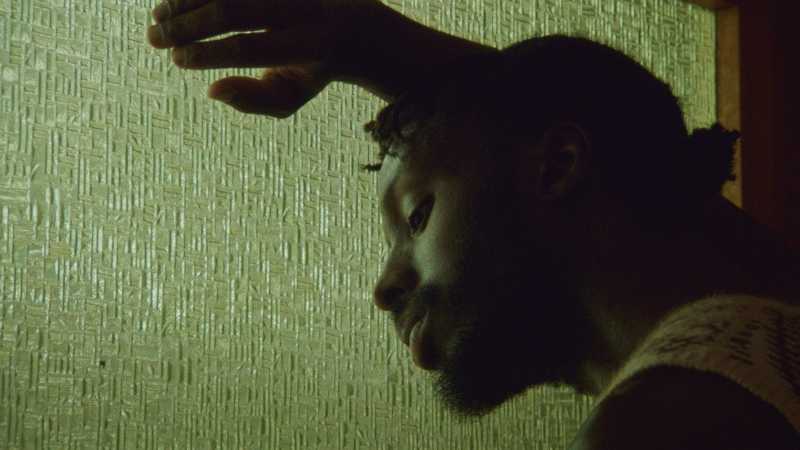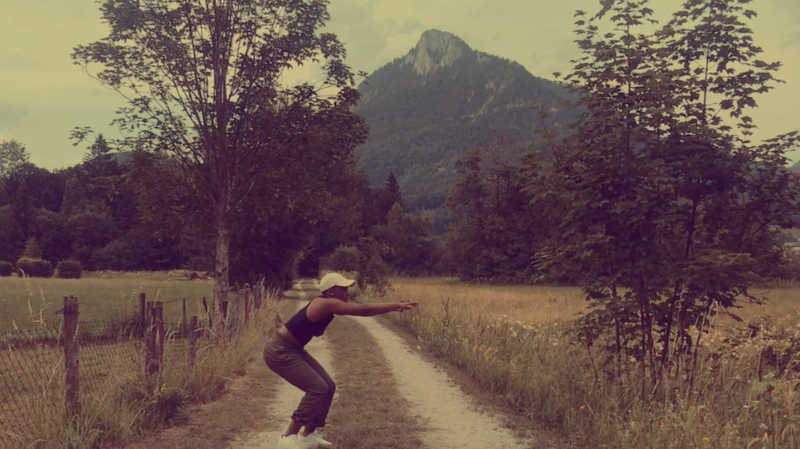As I now dance alongside a virtual library of my classmates, I remember when I would sweat, front row in the sidelight of grandiose New York City stages, or backstage hovering in the shadow of a pulled wing at our own university’s theater in the East Village. Before sweeping up my life from every discernible corner of a musty dormitory and heading back home to California, I remember one of the last performances of the city’s in-person season. Among them was Cherylyn Lavagnino Dance. By both freeing and conserving the stillness from classic paintings, the company of artists epitomized the motion we all missed from this roller-coaster metropolis, that now also lay in stillness.
“The expression of the human experience cannot be replaced by computers or machines,” stated Artistic Director, Cherylyn Lavagnino in reference to her contemporary-ballet company’s February premiere of Tales of Hopper at The DiMenna Center for Classical Music, herself at inevitable odds with a future where technology would indeed dictate human connection.
Members of the company collaborated with both Lavagnino and composer Martin Bresnick to stage a world imagined by Hopper and his eccentric wife and muse, Josephine, distilling eight of his works into a series of photographic vignettes. A professor of mine, Lavagnino would always emphasize the breath in musicality, our breath that is, as we traversed one accompanist’s mischievous phrases, and another’s aerodynamic legato from barre to center. Yet every one of her notations about movement and melody required presence — who were we to possibly call ourselves dancers without it?
I remember the orange hue of the performance hall and the slow gathering of friends, students, collaborators, and connoisseurs. We were there to witness a work of contemporary dance on American realist painter, Edward Hopper — a man whose work revealed the recluse in everybody, the rooms only we inhabit at the far corners of the earth. And now looking back on the movement of February with the stillness of April, I never figured we would land at the paradoxical intersection of the alienation Hopper contained in his artwork, and the alienation we now face in a crisis of the modern age.
In a not-far-back conversation I shared with a classmate, we discussed the dilemma of the quarantined artist, that despite choosing a lifestyle that doesn’t guarantee any certainty, we still cannot be free to not know; instead, we must be imprisoned not knowing. To initiate Lavagnino’s anthology of Hopper’s work was soloist, Sharon Milanese, whose state of leisurely repose in Morning Sun (1952) often shifted into one of tortured solitude. Her supple wilting and bowing along the frame of a bench alluded to both the window in the painting and a ballet barre, a thoughtful insertion of the confining freedom in the life of a dancer.
I remember savoring the awkwardness — now I do more than ever — in my own moments gesturing to a partner across the studio trying to deliberate through a series of muddled gestures whether or not to share the material we’d created. As if to satirize this idea of isolation, Lavagnino’s second vignette, People in the Sun (1960) revisited the Hopper-era cultural etiquette of lounging and relaxation. The silence seemed to announce the breath in each gesture, if not simply the breath itself. Dancers Dervla Carey-Jones, Gwendolyn Gussman, Malcom Miles Young, Emma Pajewski, and Philip Strom each amplified the silence with slight rearrangements of their chaise-lounges, sometimes towards the others flirtatiously, sometimes away from the others in irritation, sometimes in the desire to be estranged altogether.
It was like being stuck to a place in time, as I watched soloist Justin Faircloth in Gas (1940), spring back-and-forth between a seemingly endless plane of no one but his wistful reflection. Fully estranged, Faircloth accompanied himself with acrobatic bounds upwards, sideways and across the stage like a man lost in thought. The sparsity of piano keys left a dense space for the laborious tasks of the gas station attendant, as well as the mundanity of the violin, which no matter how far into a phrase it traveled, always came back to its start.
Dancers Lila Simmons and Oscar Rodriguez perhaps disclosed one side of Edward and Josephine’s dynamics in Lavagnino’s fourth vignette of Office at Night (1940). As the couple’s dynamic diverged from one of passion to one of defeat, I am now reminded of our own thoughts immersed in the belief that something bigger than anyone had suddenly swallowed us whole. In the scene, Rodriguez portrayed a solemn businessman at a translucent desk, in the twilight of a late working afternoon. Himself and a woman, likely his secretary, entered a rigid tango as they grappled with the professional implications of their affair. And in one moment, our great passions had become a dance with ourselves, on ghost flights with masks, and in cars driving Purelled steering wheels.
For me, the proceeding vignette, NY Movie (1939), grew to be an unexpected time-capsule of belonging, that our wish for companionship then was no different than it is now. Dancer Kristin Foote played a movie theater usher, in her spare moments found leaning on the theater’s outskirts on what set designer Jesse Seegers interpreted as a frosted glass wall. Foote was soon joined by Malcom Miles Young, a perceptive young bachelor who emerged from behind the wall like a visitor through a clouded window pane. Their brief slow-dance effortlessly sailed through space, a blue-tinted dream inside Foote’s reverberating stillness. Lighting designer Frank DenDanto III brilliantly illuminated the glass from the rear to reveal Foote’s silhouette dancing on the stage right wall, but upon Miles’ exit, only to return to stagnation.
I wonder now about first-encounters; we’re reduced to the memory of them, staring up at our bedroom ceilings hoping to relive our commonplace runnings around with the feelings associated with holding heirlooms — and as artists, our imprints are even more precious, in their impermanence, for in the time it takes to register a foot pointing, it has sadly already retreated. Despite the paintings’ asynchronous chronology — in terms of when Hopper created them — Lavagnino chose to sequence three of his works into a series of evolving vignettes. In the first, Sunlight in a Cafeteria (1958), a married man (Justin Faircloth), meets a mademoiselle (Claire Wesby) midday, the fairy-like piano tremolo enriching their first-encounter over a fallen handkerchief. Their interaction was meditative, but somehow cold, steeped in an intimate sense of the unknown.
I want to examine what it means to be thrust to the outskirts — of a city, a place, a relationship. In New York, we found ourselves in studios of people never realizing the gravity of how the world had placed us there, together; only when we find ourselves in virtual studios of people, apart, do we realize the magnitude of belonging. In the next section, Nighthawks (1942), the man’s wife (Corinne Hart) discovers the lipstick on the kerchief, a link to the beginnings of a dangerous love-triangle. A rapid trio ensued to the vigorous quivering of Elly Toyoda on violin, Wesby pushed aside as the sinful third to the duet that was never to be had.
I don’t know if being “pushed aside” will ever accurately describe our feelings of departing the most lively city in the world — or rather, witnessing its departure from us — but frustration needs to exist to prove we love something. By Automat (1927), the stage became a painful expanse, Westby toying with her green gloves as if holding the weight of one-thousand hearts. She then removed one glove to dance in a waning hallway of light, her one-gloved hand like a last attempt to reach towards something long lost. At the work’s conclusion, I was faced head-on by Westby whose eyes sparkled red, bathed in her abandon as if standing one inch from the painting itself, one inch from what would soon consume all our livelihoods, ourselves like remote figures in paintings, awaiting the moment of release.
Listening to Erik Satie’s Gnossiennes No. 2 might capture, if at best a microsecond of that evening’s performance; Lavagnino committed to a physical precision that anchored me in a world of deep emotional subtext — beyond what she could have imagined for a work that at such a historic moment forwarded this corporeal idea of isolation. Looking back into this time is like trying to read a message through the watery divots of a bottle; we’ve already withstood the crests and falls in an ocean almost too vast for the human experience to comprehend. But that’s just it: we can comprehend it, by reading dances and those two hour increments of our lives paid to spaces where the body is the matter, the creative medium through which the most impenetrable themes of our existence are made accessible. While Hopper’s paintings exhibited an emptiness associated with urban life, Lavagnino embraced it, re-touching his work for a human canvas. Her work now stands to challenge the literal separation we now all bear, though I not doubt Cherylyn Lavagnino Dance will be among those whose collectivity through art confronts this solitary moment in time.
I remember how Lavagnino would always address her students with a compassion beyond anyone’s years; she entered the space acknowledging that being a dancer, and likewise a choreographer, determined how you breathed. So from my home I will take a giant breath, hoping to encompass the people whose breath has made me move, and think, and love the world that the dance artist has timelessly forged.





